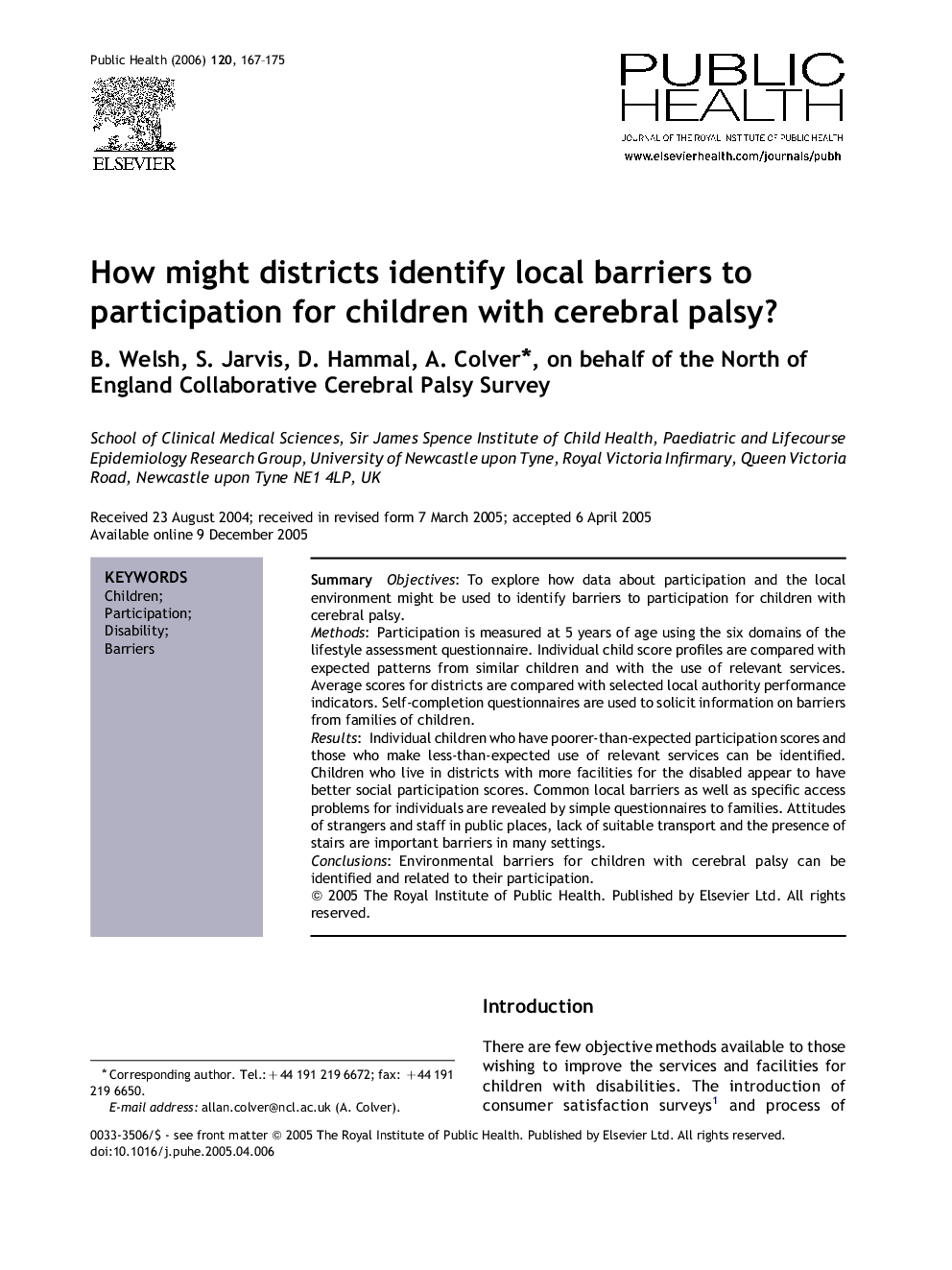| Article ID | Journal | Published Year | Pages | File Type |
|---|---|---|---|---|
| 1088846 | Public Health | 2006 | 9 Pages |
SummaryObjectivesTo explore how data about participation and the local environment might be used to identify barriers to participation for children with cerebral palsy.MethodsParticipation is measured at 5 years of age using the six domains of the lifestyle assessment questionnaire. Individual child score profiles are compared with expected patterns from similar children and with the use of relevant services. Average scores for districts are compared with selected local authority performance indicators. Self-completion questionnaires are used to solicit information on barriers from families of children.ResultsIndividual children who have poorer-than-expected participation scores and those who make less-than-expected use of relevant services can be identified. Children who live in districts with more facilities for the disabled appear to have better social participation scores. Common local barriers as well as specific access problems for individuals are revealed by simple questionnaires to families. Attitudes of strangers and staff in public places, lack of suitable transport and the presence of stairs are important barriers in many settings.ConclusionsEnvironmental barriers for children with cerebral palsy can be identified and related to their participation.
